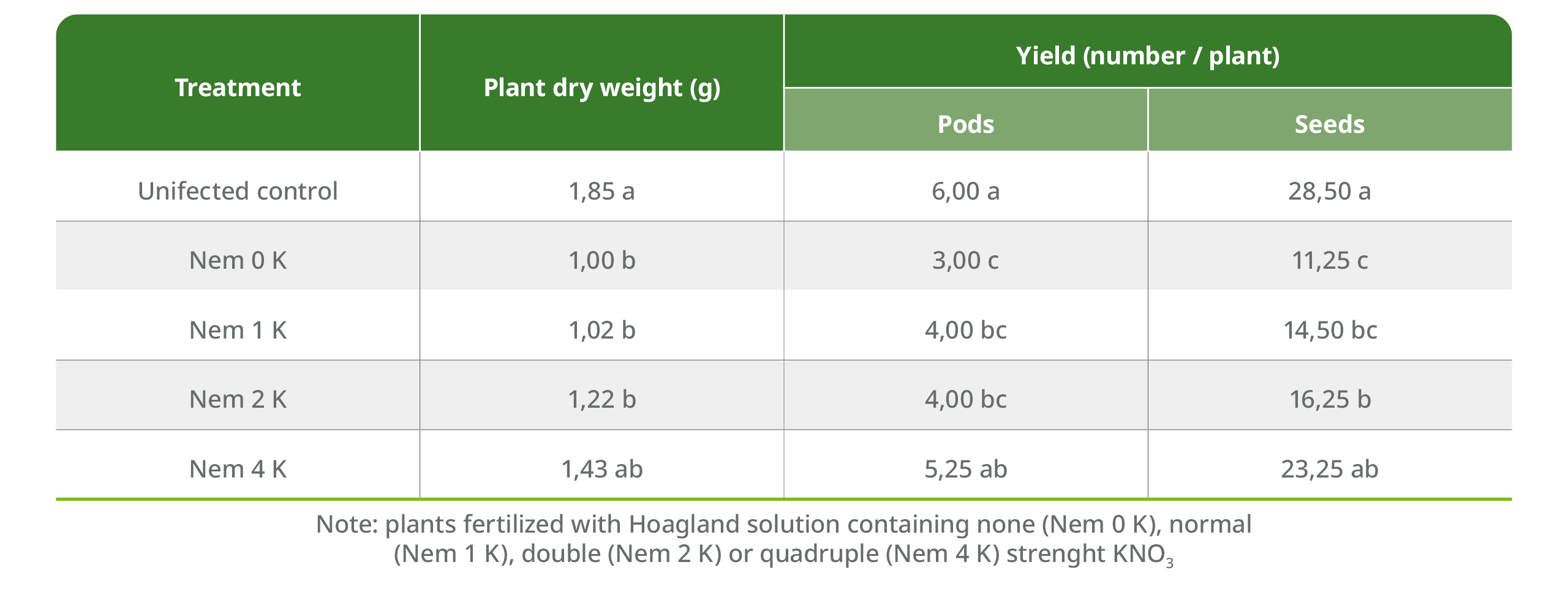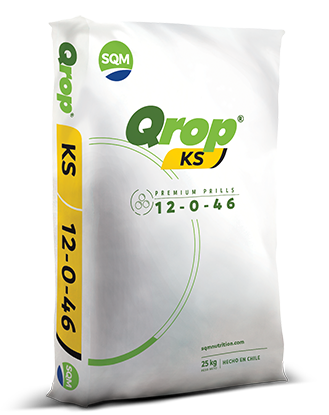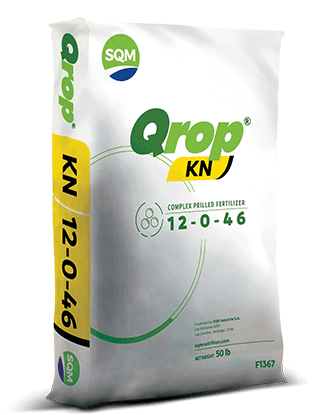In this study one-week-old bean (Phaseolus vulgaris) plants were inoculated with 4000 second stage Meloidogyne incognita nematode juveniles and fertilized with Hoagland solution containing none (Nem 0 K), normal (Nem 1 K), double (Nem 2 K) or quadruple (Nem 4 K) strength KNO3 and compared with uninfected controls that received normal strength Hoagland solution. The aim was to determine if increasing the levels of KNO3 in normal strength Hoagland solution could alleviate the detrimental effect of M. incognita infection in beans. Bean seedlings were grown in plastic pots filled with steam sterilized soil (1:1 sand:silt mix).
The stem, shoot and total plant dry weight of the uninfected plants was significantly higher than all infected treatments, except the Nem 4 K treatment (Table 1). At 28 days after inoculation, the number of pods and seeds for the infected plants was significantly decreased compared to the uninfected control plants, except the Nem 4 K treatment (Table 1). Four times the normal dose of KNO3 applied to a nematode infected plant resulted in the same yield level as an uninfected plant receiving normal KNO3 dose. From 21 days after infestation onwards the photosynthetic rate of all nematode infected plants generally increased with increasing potassium nitrate level, but not higher than in the uninfected controls. The results showed that the growth response of M. incognita infected beans can be improved by applying KNO3 to the soil. Increasing the potassium nitrate dose applied to nematode infected plants delayed chlorosis, prolonged the photosynthetic period and rate, and so increased productivity of the infected plants.
Table 1. The effect of Meloidogyne incognita nematodes on plant dry weight and yield of bean plants at 28 days after inoculation. Means followed by the same letters are not significantly different from others in the same column at P=0,05 (n=4).



